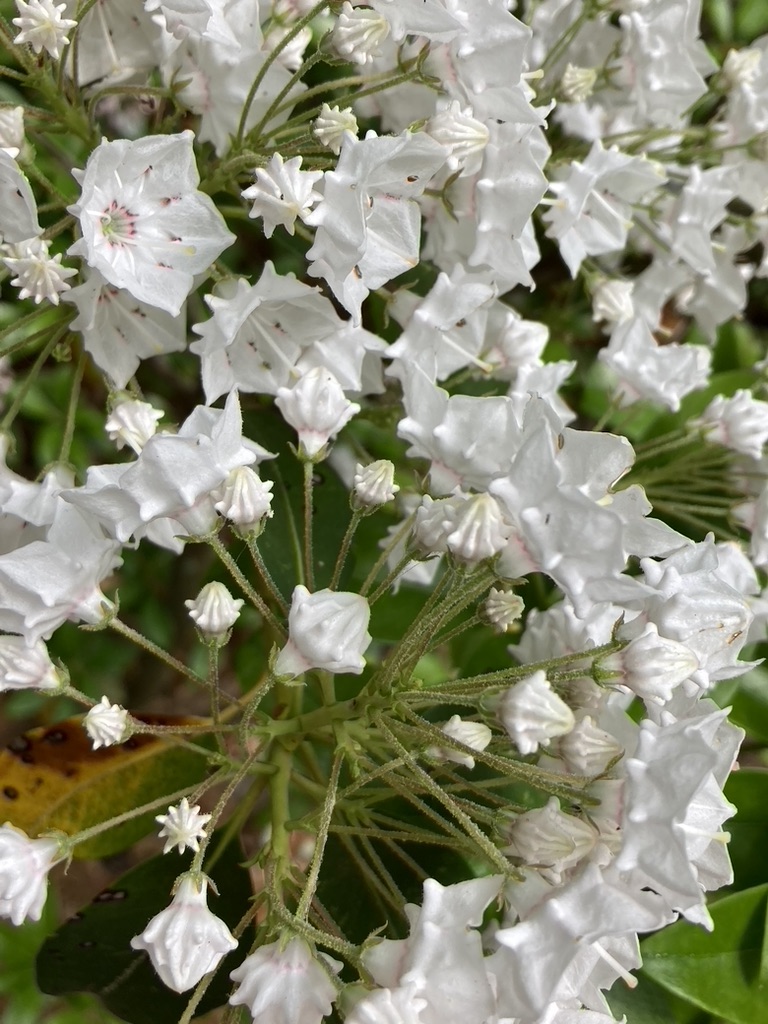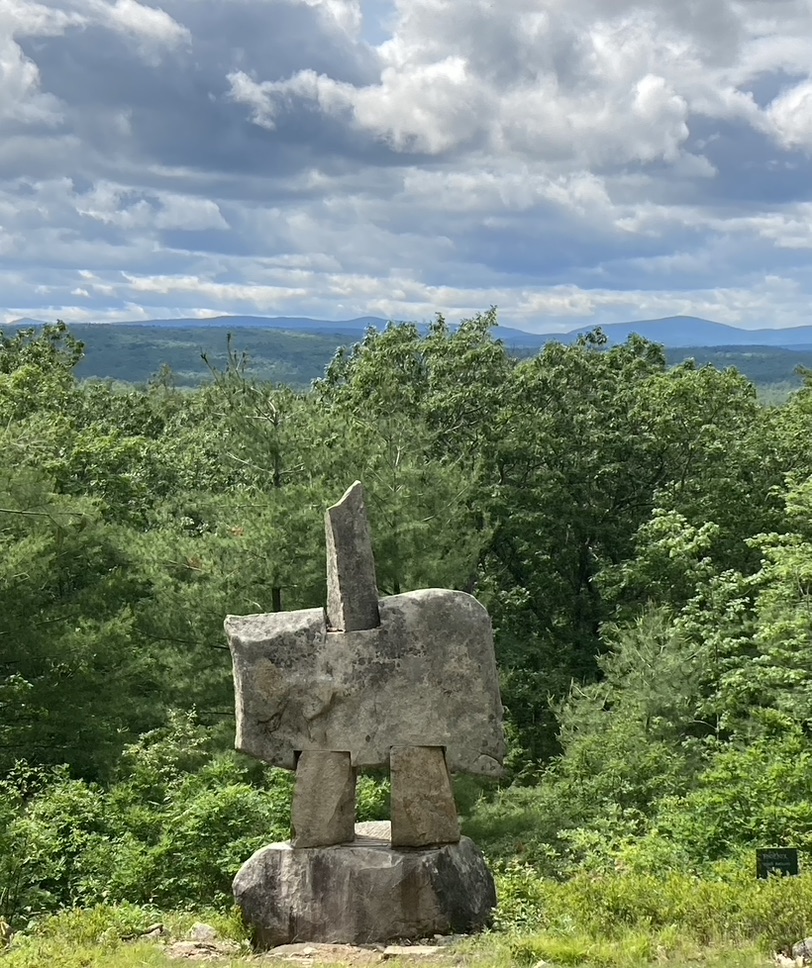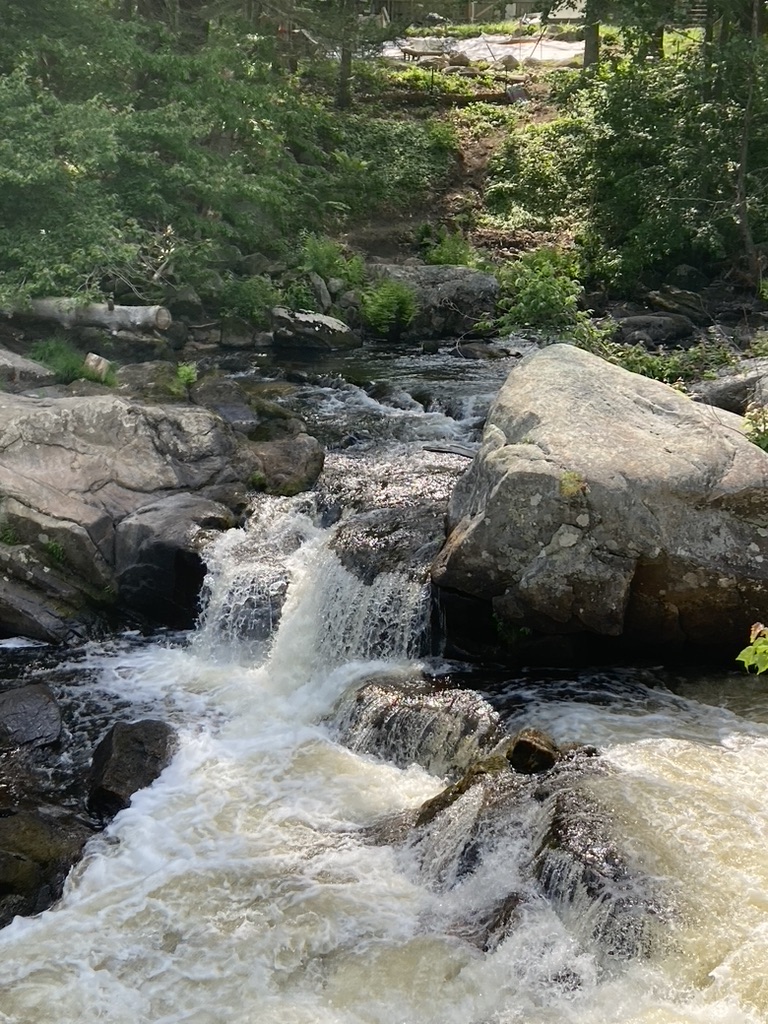Only last year, we were concerned about drought in my region. I loved the dry trails throughout summer and fall, but then there was an uneasy November afternoon when a fire behind my house crept through dry duff and brush up to the edge of my yard. (My town’s firefighters did a fine job that day, which is pretty much what they do all the time.)
I’m not anticipating any such excitement this year, at least not in early summer. June has brought rain and lots of it. Maintenance of unpaved trails has been a challenge. Trailside vegetation is growing lushly in defiance of mowers and weed-whackers. My supplies of permethrin and DEET will need replenishing before the season’s out, since pests like ticks and mosquitoes love this sort of environment. And you know what? I’m fine with all of that.
Mountain laurel and sheep laurel are having a magnificent year. Even the buds were beautiful, giving me a week’s notice of the bounty to come.

The Souhegan River sure looks good after last year’s low levels. It has stayed within its banks so far. I love being able to hear the river as I walk through my neighborhood! Last year, it made barely a sound as flowed by slowly. Wildcat Falls, within one of my town’s conservation properties, has been worth several visits this month.
Several factors have kept me close to home lately, but I’m enjoying plenty of good walks. I went back to the Andres Institute of Art in Brookline to see what was new on the trails. This unique venue is set up on what was once a very tiny ski area. What used to be ski trails are now walking trails, with sculptures around every turn. New sculptures are installed every year, created by a variety of artists from all over the world. There’s no visitor’s center, but checking the website at andresinstitute.org will help orient the first-time guest. One of my favorite places on the site is at the modest summit. “Phoenix” by Janis Karlovs of Latvia adorns the view to the west.

Rain has left the Rockingham Recreational Trail in Auburn soft but not too muddy. The walk eastward from the Lake Massabesic parking lot is one of the best quick lunchtime getaways that southern New Hampshire has to offer. Midweek is ideal. On the edge of New Hampshire’s largest city, sometimes within sight of busy route 101, the trail is a place of quiet refreshment for me. Wild roses were blooming as I walked through recently. I caught the fragrance before I saw the blossoms.

That’s not too bad for a rainy June. I could stand a little more sunshine, but summer is young. Clearer days are ahead.






